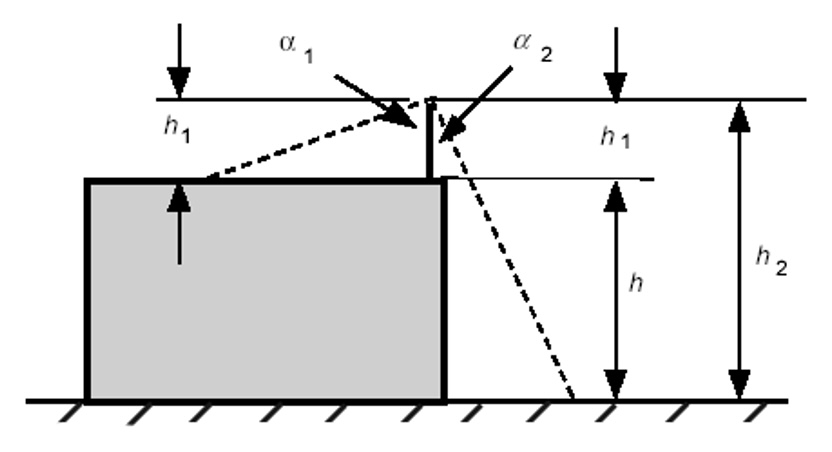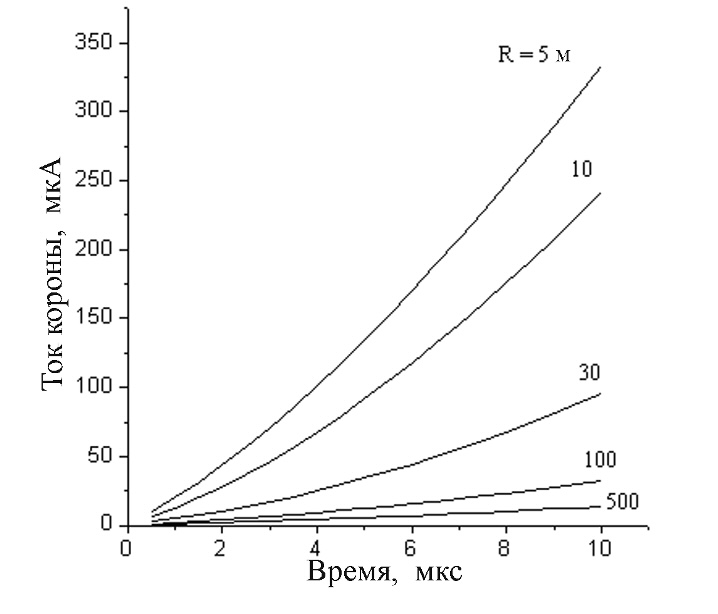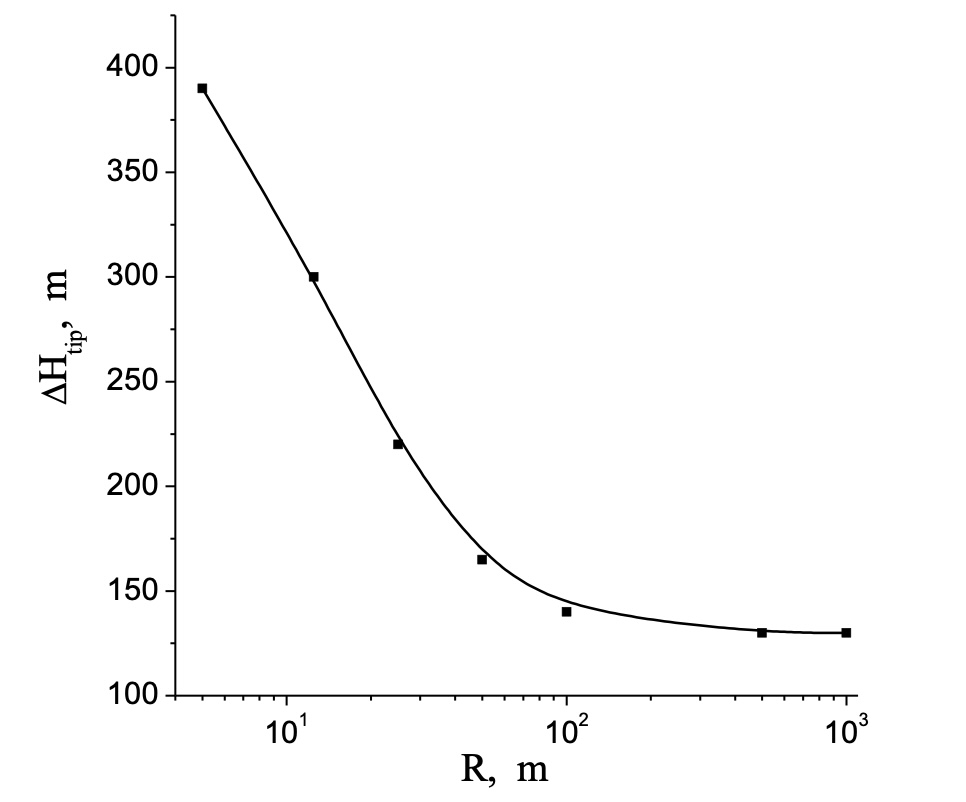
E. M. Bazelyan, DEA, professor;
Power Engineering Institute to the name of G.M. Krzhizhanovsky , Moscow;
recognized Russian expert in the field of grounding and lightning protection.
Height is a main parameter of the lightning arrester. It determines its protection efficiency. Therefore, lightning arrester protection zones are generated depending on its height. It is easy to determine the lightning arrester's height when it is installed on the ground. But often, lightning arresters are installed on the building's roof. Then, the problems begin. Where is a reference point: on the ground or on the roof? Fig. 1 has been taken from IEC 62305.

Fig. 1
Uncertainty is obvious. When calculating the protection zone on the roof, the height is taken from the roof, and if a facility is located on the ground, you should start calculations from the ground. To make things clear, authors of the standard placed lightning arrester near the roof edge. It seems to be more clear. What if you move for one meter, 5 meters, 20 meters? The picture will not be as convincing as it is now. Two different heights for one existing structure is not easy to imagine. The lightning arrester attracts lightnings. It is not obvious where they are going: to the roof facilities or to the ground ones. All of them should be caught with the same lightning arrester. And the height issues essential for real-world practice. Modern buildings have roofs with dimensions of many meters. Lightning arresters are installed in various locations, not necessarily near the edge. What height should we then use?
Reference to the Russian regulatory documents for lightning protection do not make things clearer. There, the lightning arrester's height is always calculated from the ground surface. But if a building is large and, say, there is at least 50 m of distance from the 5-m lightning arrester to the edge of the roof? How this lightning arrester should know about this edge? The authors of the regulatory documents hardly thought about it.
The task is ideologically simple but it is rather complex and confusing in terms of formation of particular technical recommendations. To understand the essence, let's start with the simple but certain issues. The designer should evaluate the protective effect of the lightning arrester, e.g. find a protection radius at the ground level or at some other height. Lightning attracting to the lightning arrester is defined by the conditions of the development of an opposed leader channel from it. This is described in the common Gold's hypothesis. To start and develop the opposed leader, you need a strong electrical field. It is created by the thundercloud charge and the charge carried by the leader channel of the downward lightning. The strength of the electrical field at the lightning arrester's top is determined not only by its own induced charged but also on the induced charge on all surrounding conductive surfaces, including on the ground surface and on the building's roof, if the lightning arrester is installed there. You should begin analysis from the assessment of such surfaces.
An international research team which the author of this short article was a member of, focused on numerical modelling of an opposed charge from the lightning arrester's top, which is located at the roof centre of the circular cylinder facility of various heights and various radii. A circular symmetry simplified drastically numerical calculations and thus reduced time for it.
As it is known, in the thunder conditions, an opposed discharge from the top of the lightning rod starts as a streamer-free crown, which, at a particular current, goes into the streamer form, then causing the start of the opposed leader. The fact of such transition is determined by strengthening the electrical field of the lightning arrester by the downward lightning leader discharge. The height of its head at that moment determines the height of the lighting orientation directly related to the radius of the lightning attraction to the lightning arrester. Thus, the results of numerical modelling can qualitatively assess the efficiency of the protective action of lightning rods.
The task requires complex calculations. Therefore, the provided example results characterize only axially-symmetrical cylinder system with a lightning rod installed at its centre. The calculated data shown in Fig. 2 demonstrated the dynamics of the current growth of a streamer-free crown from the lightning arrester with height h = 6 m at its installation on the roof of the cylinder building 100 m high. It was supposed that the electrical field of the thunderstorm grows with the constant speed up to 200 kV/m for 10 sec. These are typical parameters for the thunderstorm environment. You can make sure that, with the roof radius 500 m, the crown current does not differ significantly from the one typical of the lightning arrester of a similar height installed on the ground (about 11 mcA). With the roof radius reduction, the crown current grows, reaching the threshold of 560 mcA at the limit which is typical of the electrode on the ground with the total height 106 m. Such a significant relationship between the conditions for the formation of the opposed discharge and the facility dimensions where the lightning arrester is installed, is also demonstrated for the conditions

Fig. 2
Ток короны, мкА - Crown current, mcA
Время, мкс - Time, mcs
of transition of this process into the streamer form which leads to the start of the opposed leader and to beginning of the orientation process. Calculated data in Fig. 3 show at which elevation of the lightning channel head it occurs under the conditions of the example considered herein. The calculation is performed for the average (in terms of power) lightning with the linear leader charge 0.5 mC/m, which goes down from the thundercloud with the speed of 200 m/ms, directly at the vertical axis of the lightning arrester (for simplicity). In a practically significant range of dimensions (at the roof radius variation from 100 to 10 m), the head elevation for the lightning channel of interest ΔHtip changes by more than twice. It means that the lightning attraction radius to the lightning arrester, Ratt, according to the principle of equal distances defined by

at the lightning arrester height h << ΔHtip was approximately evaluated as


Fig. 3
Полусфера радиусом 1 см на высоте 10 м над цилиндром - Hemisphere with radius 1 cm at the height 10 m above the cylinder
Высота цилиндра – 90 м - Cylinder height – 90 m
Лидер с зарядом 0,5 мКл/м стартовал с высоты 3000 м - Leader with the charge 0.5 mC/m started from the height of 3,000 m
Скорость лидера 200 м/мс - Leader speed 200 m/ms
Поле грозового облака линейно росло до 200 В/см за 10 с - Field of a thunderstorm increased in a linear fashion up to 200 V/cm for 10 sec
With such low dependence between lightning attraction radius and its height, ΔHtip the uncertainty of estimate of this parameter due to roof dimensions is not significant. In the provided example, we are talking about the ratio close to 1.4-1.5, which is not really significant when, in practice, we use the protection reliability values differing at least by an order of magnitude.
Considering this, I take the risk to disclose my own, non-approved suggestion. It will allow choosing rational dimensions for lightning arresters for the structures having an ordinary height (up to 150 m), for which solely downward lightning strikes are typical.
- The height of the lightning arrester to protect the structures located on the building's roof, determine by its elevation above the roof surface. This is rational at least when the roof dimensions are not less than the radius of lightning attraction to the lightning arrester being equal to its triple elevation above the roof.
- The height of the lightning arrester installed on the roof but intended to protect structures on the ground irrespective of its location relative to the roof edge can be taken from the ground and the reliability of the structural protection should be evaluated based on the efficiency of such single high-rise lightning arrester (e.g. by its protection zone).
- In the case when the facility protection on the ground is less than allowable (e.g. it does not fit the protection zone), the lightning arrester's effect on the roof should be ignored, and the protective effect of the building itself should be evaluated, which should be considered as a natural lightning arrester.
In conclusion, I offer one significant note. The calculation of the protective effect should be made following the Russian methods or at least according to the calculation formula provided in the Lightning Protection Instructions SO-153-34.21.122-2003. Rolling sphere method and protective angle method taken from IEC 62395 are not suitable for this. Confusions they lead to have already been discussed in our webinars. Their criticism is still relevant even for the lightning arresters located on the roof.
Related Articles:
 6. How to do that?
6. How to do that?

